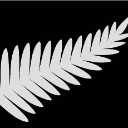- Home
- /
- Programming
- /
- Programming
- /
- Display totals as percentage before or after proc transpose
- RSS Feed
- Mark Topic as New
- Mark Topic as Read
- Float this Topic for Current User
- Bookmark
- Subscribe
- Mute
- Printer Friendly Page
- Mark as New
- Bookmark
- Subscribe
- Mute
- RSS Feed
- Permalink
- Report Inappropriate Content
data have;
format bi_date date9.;
infile datalines;
input ln_no $4.
days_past
bi_date date9.
tot_cnt
stay_current
;
return;
datalines;
1111 12 31Mar2020 1 1
2122 12 31Mar2020 1 1
1244 12 31Mar2020 1 1
3333 44 31Mar2020 1 0
2222 30 31Mar2020 1 0
1111 20 30Apr2020 1 1
2222 20 30Apr2020 1 1
3333 22 30Apr2020 1 1
1111 30 31May2020 1 0
2222 11 31May2020 1 1
3333 45 31May2020 1 0
;run;
proc sql;
create table _01_count as
select 'Current' as lbl_Current,sum(tot_cnt) as Count,
sum(stay_current) as Stayed_Current,
bi_date
from have
group by bi_date
order by bi_date
;quit;
proc transpose data=_01_count out=_01_count_2 let;
id bi_date;
var count Stayed_Current;
by lbl_Current;
run;
Produces this
|
lbl_Current |
_NAME_ |
31MAR2020 |
30APR2020 |
31MAY2020 |
|
Current |
Count |
5 |
3 |
3 |
|
Current |
Stayed_Current |
3 |
3 |
1 |
Desired Result as follows.
- I want to change the dates to char fields however keep the date order
- I want to display the Count in it’s current form as a numeric however display the Stayed_Current as a Pct of the totals
|
lbl_Current |
_NAME_ |
31MAR2020 |
30APR2020 |
31MAY2020 |
|
Current |
Count |
5 |
3 |
3 |
|
Current |
Stayed_Current |
60.00% |
100.00% |
33.33% |
Would I need to handle the calculation in the proc sql,proc tab or in the datastep
- Mark as New
- Bookmark
- Subscribe
- Mute
- RSS Feed
- Permalink
- Report Inappropriate Content
You can only apply one format at a time to a variable (column) in a table.
Looking at your desired result: Do you really need to create a table using Proc Transpose or are you just after a report?
- Mark as New
- Bookmark
- Subscribe
- Mute
- RSS Feed
- Permalink
- Report Inappropriate Content
1. Paste your code using the appropriate icon
2. The expected result looks like a report. Maybe a proc tabulate result. Is this what you want?
3. I cannot understand what the percentages represent.
April 27 – 30 | Gaylord Texan | Grapevine, Texas
Registration is open
Walk in ready to learn. Walk out ready to deliver. This is the data and AI conference you can't afford to miss.
Register now and lock in 2025 pricing—just $495!
Learn how use the CAT functions in SAS to join values from multiple variables into a single value.
Find more tutorials on the SAS Users YouTube channel.
SAS Training: Just a Click Away
Ready to level-up your skills? Choose your own adventure.


